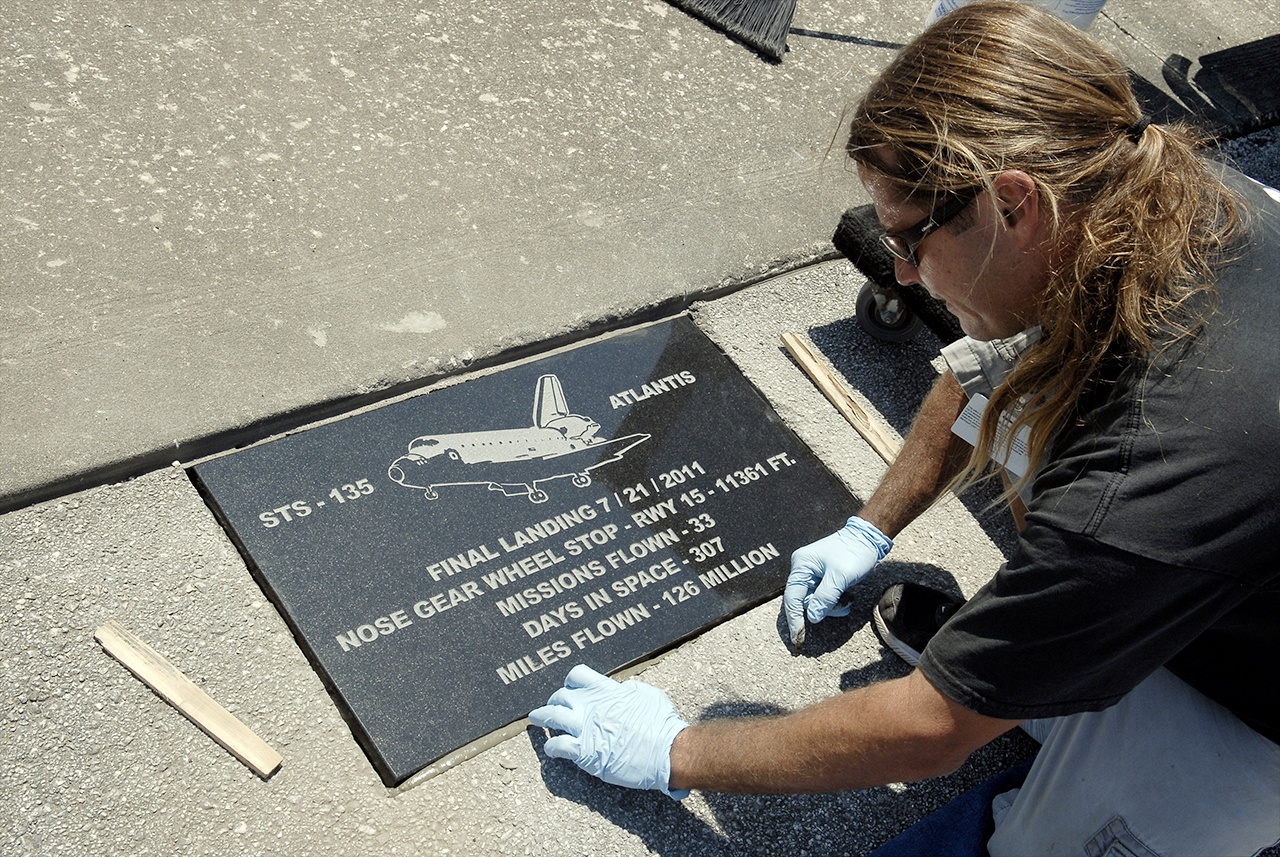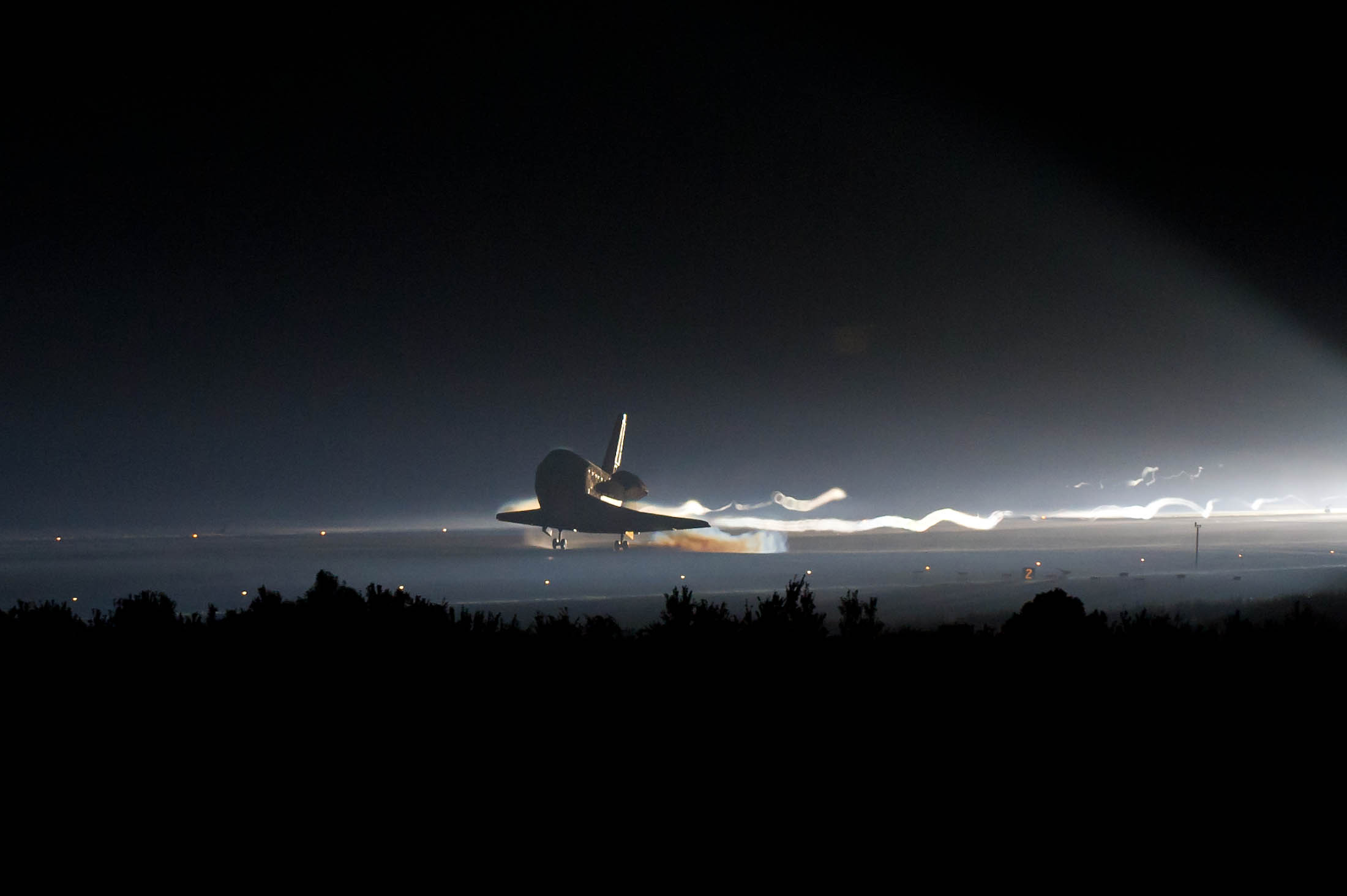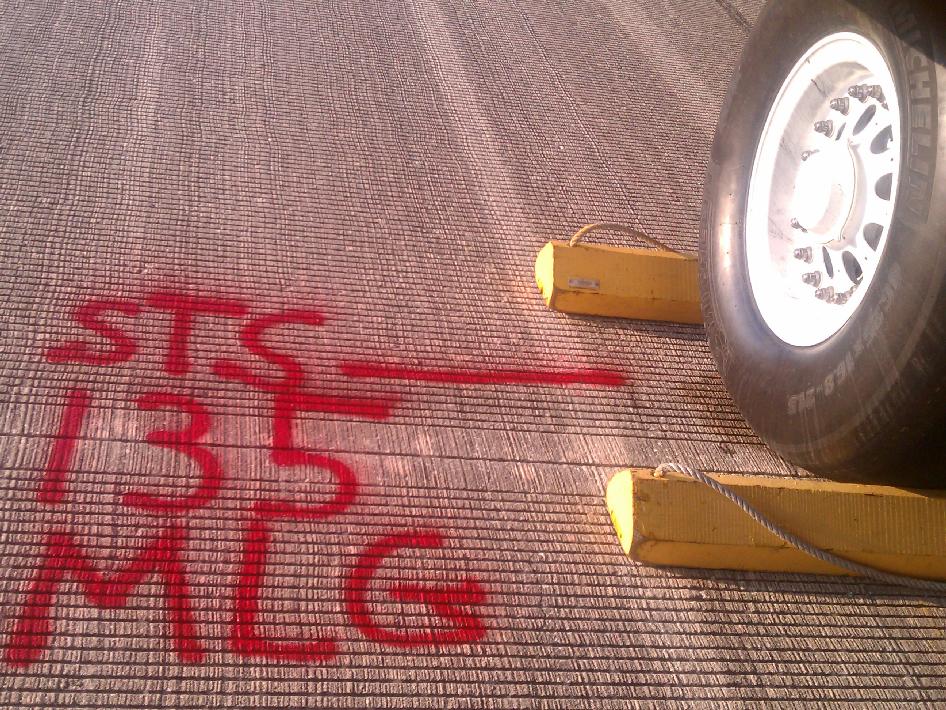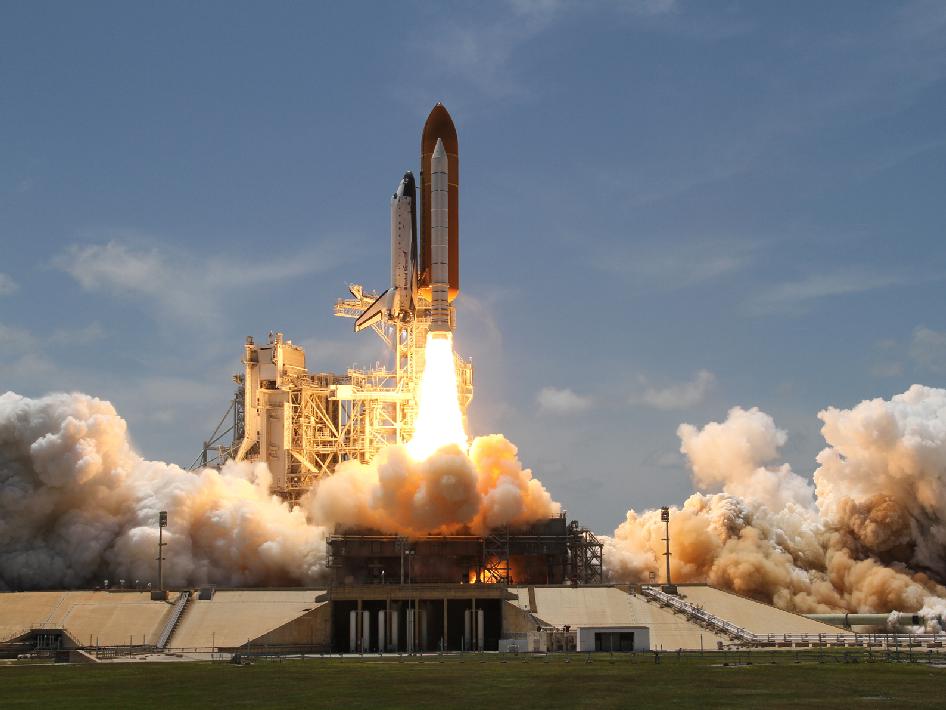Where Last We Landed: New Plaque Marks Where Space Shuttle 'Stopped'

"Mission complete, Houston. After serving the world for over 30 years, the space shuttle has earned its place in history. It's come to a final stop."
With those words, astronaut Christopher Ferguson signaled the end of the 135th and final shuttle mission on July 21, 2011. Almost a year later, the spot where STS-135 commander Ferguson brought space shuttle Atlantis to its "wheels stop" has been marked with a permanent plaque.
The 16- by 28-inch (41- by 71-centimeter) black granite marker was installed June 28 alongside Runway 15 at the Kennedy Space Center's Shuttle Landing Facility (SLF) in Florida. It was the third similarly-designed plaque added to mark where NASA's three retired winged orbiters had come to their final resting stops after each of their last spaceflights.
Atlantis' plaque is positioned 11,361 feet (3,463 meters) down the length of the 15,000-foot (4,572-meter) concrete landing strip. The SLF has one of the longest runways in the world. And at 300 feet (91.4 m) wide, the runway spans from edge to edge about the length of a football field. [Final Landing of Space Shuttle Atlantis (Photos)]
Like the granite tablets that were earlier installed for sister ships Discovery and Endeavour, Atlantis' marker features an engraved depiction of the space shuttle landing, along with the date of its final touchdown and how far it traveled down the runway. The plaque also notes the number of missions Atlantis flew (33), its total days in space (307) and miles flown while orbiting the Earth (126 million).
When Atlantis landed in July 2011, the locations where its nose and main landing gear came to a halt were marked on the runway using spray paint. Last month, that freehand notation was removed and replaced with a smaller, stenciled note. Atlantis' plaque was positioned parallel to the painted notation at the edge of the runway so as not to interfere with the strip's continued and future use by air and spacecraft.
The plaques were created and installed for NASA by C Spray Glass Blasting of Cocoa Beach, Fla. The project to install the markers began last year under former space shuttle launch integration manager Michael Moses working with Kennedy employees Mike Ciannilli, Melissa Jones, Dean Schaaf and Malcolm Glenn.
Breaking space news, the latest updates on rocket launches, skywatching events and more!
Atlantis' final, final stop will come this November when it will be rolled over to the nearby Kennedy Space Center Visitor Complex for display. The orbiter's new $100 million, 65,000-square-foot exhibit is set to open to the public in summer 2013.
Click through to collectSPACE.com to see more photos of the plaque marking space shuttle Atlantis’ final wheel stop.
Follow collectSPACE on Facebook and Twitter @collectSPACE and editor Robert Pearlman @robertpearlman. Copyright 2012 collectSPACE.com. All rights reserved.

Robert Pearlman is a space historian, journalist and the founder and editor of collectSPACE.com, a daily news publication and community devoted to space history with a particular focus on how and where space exploration intersects with pop culture. Pearlman is also a contributing writer for Space.com and co-author of "Space Stations: The Art, Science, and Reality of Working in Space” published by Smithsonian Books in 2018.
In 2009, he was inducted into the U.S. Space Camp Hall of Fame in Huntsville, Alabama. In 2021, he was honored by the American Astronautical Society with the Ordway Award for Sustained Excellence in Spaceflight History. In 2023, the National Space Club Florida Committee recognized Pearlman with the Kolcum News and Communications Award for excellence in telling the space story along the Space Coast and throughout the world.




